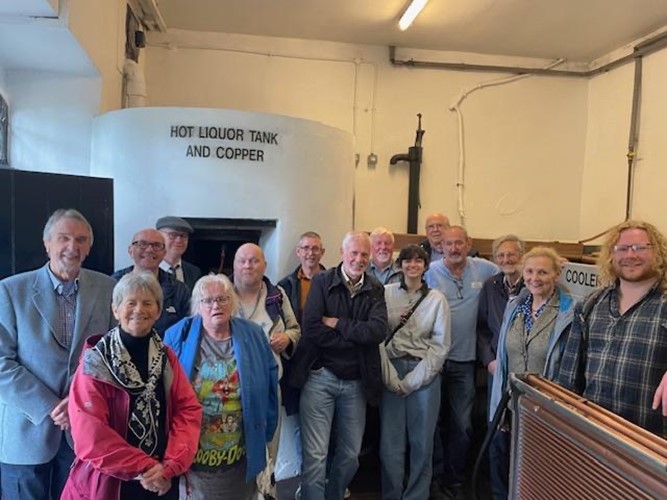1. Chairman’s Statement:
The passing of Sir Geoff Palmer has been well documented in the media, and I can only add my own sentiments by saying it has been a privilege and an honour to have known him. Geoff was a quietly spoken and humble man, who often used humour in his talks and always had time for a chat. I met him many times and would listen to many of his life stories. The honours he has received in his lifetime speak volumes of his life and his outstanding achievements.
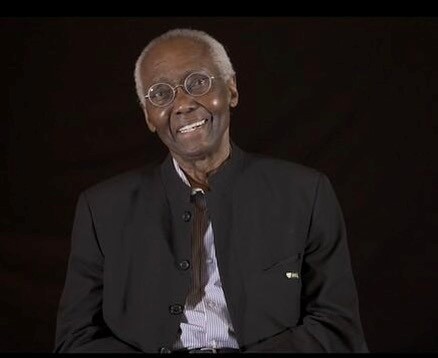
The birth of the Scottish Brewing Archive began when Geoff climbed into a skip to rescue letters and documents, when visiting Abbey Brewery, the Head Office of Scottish & Newcastle. He will sadly be missed by everyone who knew him. Many thanks to the SBAA members who wrote in to express their feelings on hearing of the news of Sir Geoff. The SBAA received a grant from the Old Edinburgh Club earlier this year to write a book on the history of brewing in Edinburgh. It is hoped the book will be completed this year, once it has been edited and printed. A further update will be included in the next Newsletter. There has been a new addition of beer related links to the SBAA website. Please visit the website and try a few of the links. https://www.scottishbrewingarchive.co.uk/beer-brewing-links/ This year’s annual outing will be to visit the Traquair Brewery and the historic house and grounds. Please see Last Runnings at the end of the Newsletter for details. The planned visit to the Epochal brewery in Glasgow has been cancelled as the brewery has now been closed.
John Martin2. Obituary: Professor Emeritus Sir Godfrey (Geoff) Palmer, KT, OBE (1940-2025)
Sir Geoff Palmer, Professor Emeritus and Chancellor of Heriot-Watt University was born in Jamaica in 1940, Sir Geoff (real name Godfrey) and migrated to London in 1955. After finishing school, he secured a job as a Junior Laboratory Technician at Queen Elizabeth College in 1958 and with improved qualifications and the support of his Head of Department, he gained a place at Leicester University in 1961 to study Botany. After graduating with an Honours Degree at Leicester University, Sir Geoff first arrived in Edinburgh in 1964 to pursue a PhD in Grain Science and Technology jointly with the then Heriot-Watt College and the University of Edinburgh. Upon completion of his doctorate in 1967, he worked at the Brewing Research Foundation from 1968 to 1977, where he developed the industrial process of Barley Abrasion and pioneered the use of the Scanning Electron Microscope to study cereal grains. This procedure accelerates the malting process and leads to faster and more efficient malt production, to which the brewing industry is more than grateful for the new hormone-enzyme science that led to better scientific knowledge and the abrasion technology. In 1977, Geoff returned to Heriot-Watt University as a staff member and gained a DSc degree for his research work in 1985. In 1989, he became the first black professor in Scotland before retiring in 2005. In 2003, Sir Geoff was awarded an OBE, before being knighted in the 2014 New Year’s Honours for his scientific research, charity and human rights work. He was the first European resident to gain a distinguished research award from the American Society of Brewing Chemists. In 2018, he was appointed Jamaica’s first Honorary Consul in Scotland and was the recipient in 2020 of the Jamaican national honour, the Order of Distinction (Commander Class). In 2021, Leicester University presented him with its Diversity and Inclusion award as part of its 100th anniversary celebrations and named one of its buildings after him. Sir Geoff also received the Pride of Scotland’s Lifetime Achievement Award in 2021and, in 2022, was made an Honorary Keeper of the Quaich by the distilling industry. His work on the history of the enslavement of African people as British slaves led him to work with Glasgow University on the slavery report and to chair projects set up by The City of Edinburgh Council, the Scottish Government on Museums and the University of Edinburgh. Between 2020 and 2022, Sir Geoff chaired the independent Edinburgh Slavery and Colonialism Legacy Review Group whose work has been vital in profiling the capital’s historic links with Slavery and Colonialism in the public realm. He influenced the change on slaver Henry Dundas’ plaque*. He received the Edinburgh Award in 2022. Geoff was also a Trustee of Penicuik Citizen’s Advice Bureau and who named its building ‘Palmer House’ in his honour. In 2024, Sir Geoff received Scotland’s highest royal honour, the Order of the Thistle. It is in recognition of his significant contributions to national life and public service. Sir Geoff is a true inspiration to us all. As Burn’s said in his poem “A Man’s a Man for A’ That”. Our thoughts are with his wife Maggie and family. *Henry Dundas (1742-1811) was a leading Scottish politician and when Home Secretary in 1792 was instrumental in deferring the abolition of the African slave trade.
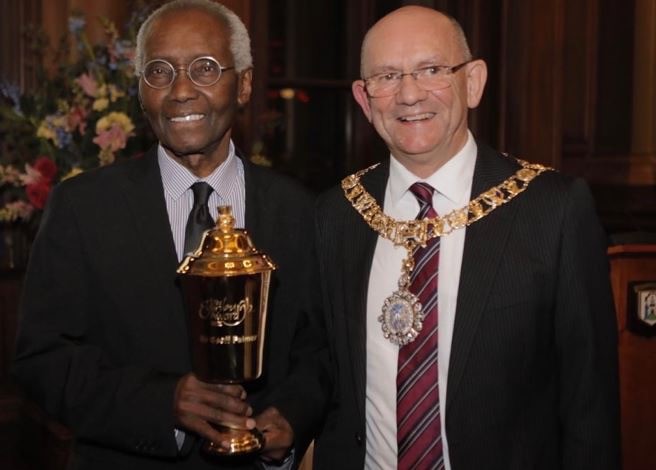
3. Beers and Label spotted.
In this year’s forthcoming journal, there is an article that tells us more about two beers, Old Engine Oil and Ola Dubh, produced by our corporate member, Harviestoun. As I was aware of this, I was pleased to come across two bottles of Ola Dubh recently.
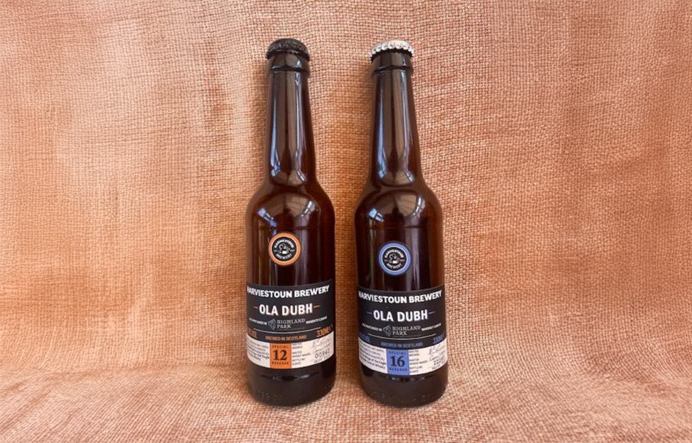
Ola Dubh is aged in Highland Park oak casks and of the two bottles, one was matured in a 12-year-old malt whisky cask, and the other in a 16-year-old malt whisky cask. I hasten to add both were delicious. So, keep your eyes peeled, as you never know what delights you may come across. In the April Newsletter there was an article on the Crown Brewery in Dumbarton. Following that article I spotted this beer label for Gillespie’s that features Dumbarton Castle as the logo. John Martin

4. Early Breweries in the Canongate (from the local Directories)
Working from the local Edinburgh Directories in the later 18th century is not particularly easy, as they were not properly established until the beginning of the 19th century. In the days before the Post Office took over responsibility for their publication, they were issued only sporadically, and being incomplete means that results are of necessity somewhat patchy. Indeed, from the first one of 1773 until the end of the century in 1800, a period of 27 years, there were only nine issues for Edinburgh and Leith. Particularly poorly represented was the 14-year period from 1775 to 1790, with only one issue, in 1784. However, these Directories are nonetheless of some interest and value in yielding information on the brewing industry at this formative moment, in Scotland’s most prolific area for beer mass production. In alphabetical order of surname, these are at least some of the people involved ~- William Fenton, Water Gate: 1775
- James Gilbert, North Back of Canongate: 1774, 75
- Thomas Haigie, North Back of Canongate: 1784
- Douglas Hardie, St John’s Street: 1784
- James Hardie, Canongate-foot: 1773; South Back of Canongate: 1774, 75 (at the same address?)
- James Douglas Hardie, Abbey: 1784
- John Hardie, Abbey: 1784, 90, 94, 97, 99, 1800.
- David Hodge, North Back of Canongate: 1790
- Edward Home, Abbeyhill: 1784
- John Hunter, foot of Tollbooth Wynd: 1774; North Back of Canongate: 1775 (at the same address?)
- Thomas Miller, Abbeyhill: 1773
- Thomas and George Miller junr., Abbey Close: 1775
- David Morton, near Paul’s Wark: 1773; North Back of Canongate: 1774 (at the same address?)
- David Murreson, foot of Campbell’s Close, Canongate: 1773
- Patrick Muirison, North Back of Canongate, opposite New Street: 1794, 97
- Mrs Murray, North Back of Canongate: 1784, 94, 97
- Daniel Murray, North Back of Canongate: 1784, 90
- Walter Murray, North Back of Canongate: 1773, 75
- Robert Reid, near Canongate-foot: 1774, 75
- Archibald Younger, Croft Angry (‘Angry’ being a corruption of the Gaelic an-Righ): 1784, 90
- Richard Younger, Gentle’s Close, 120 Canongate: 1790
- William Younger, Abbey: 1797. 99, 1800
- Younger & Sommerville, North Back of Canongate: 1794, 97, 99, 1800 (continuing until 1810)
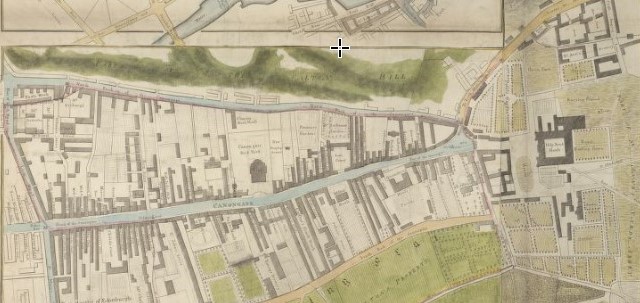
5. Pilgrimage from Australia.
The 2018 SBAA Journal Vol.18 p41 (members can view in the publication section of our website) carried an article “Its coming home” covering the remarkable story of how a bottle of Tennent’s Beer was recovered from a ship that sank off the coast of Melbourne in 1868. The bottle was recovered by Australian scuba diver Jim Anderson and returned to Wellpark Brewery after an absence of 150 years , just in time for the opening of The Tennent’s Story visitor centre. Unfortunately, Jim passed away in 2023. However, his family, including his wife Jan, two daughters and two granddaughters on their recent visit to Scotland made a pilgrimage to see the bottle proudly on display at “The Tennent’s Story”.
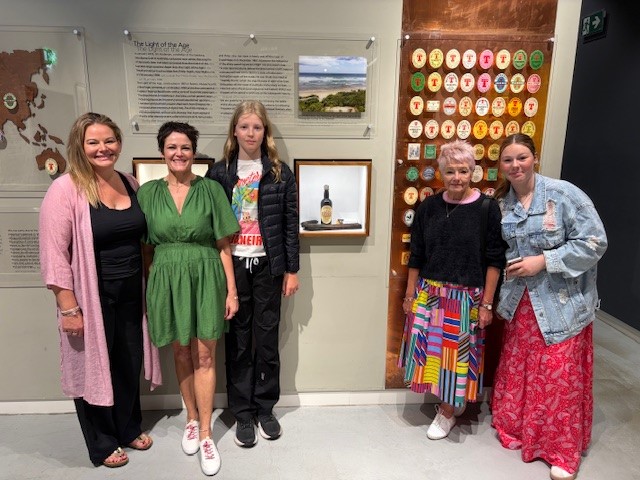
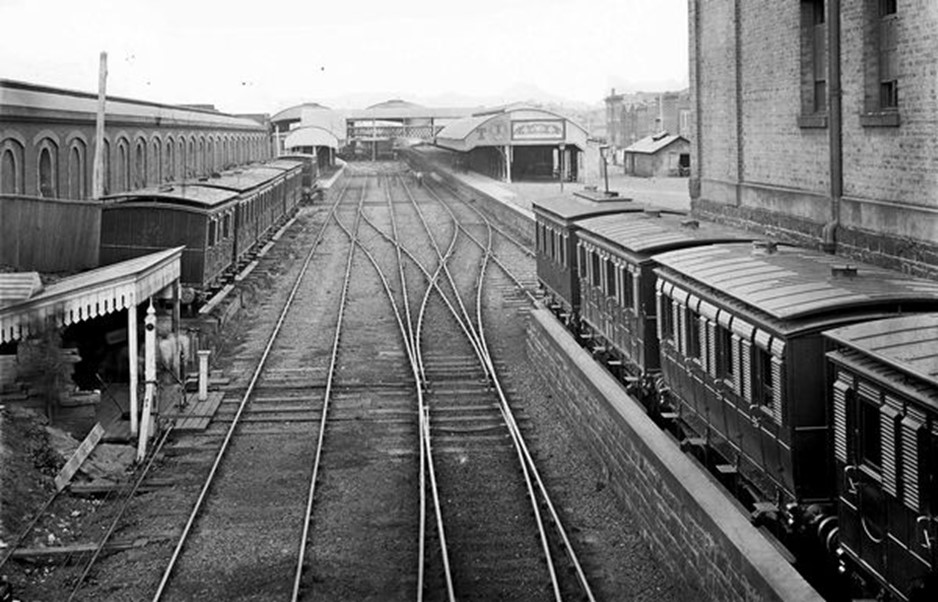
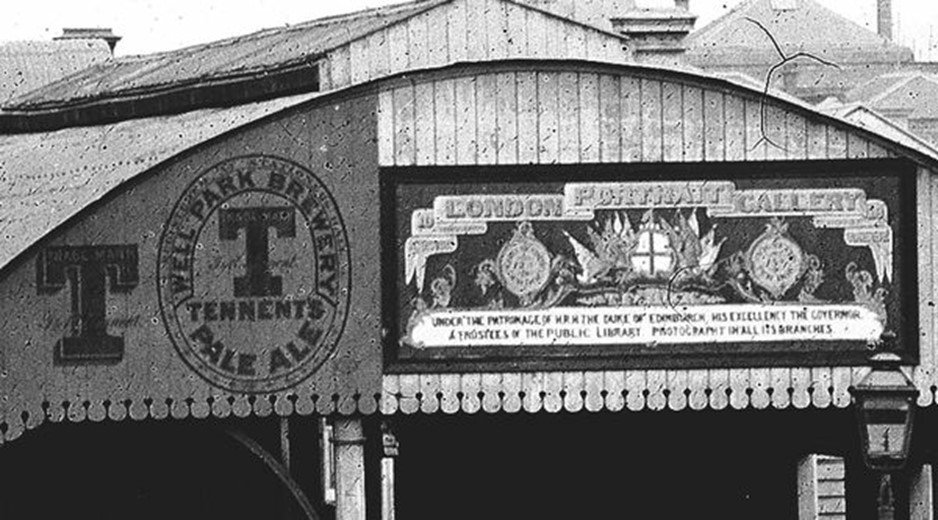
6. When Brewing vessels stopped Edinburgh
Many thanks to George Douglas in providing the following photos that appeared in the Transport Heritage magazine, Classic Truck. Three giant fermentation vessels were being delivered to Fountain Brewery, with each tank holding around about a million pints. The tanks were constructed by Robert Morton D. G. Ltd in Burton–On–Trent and shipped to Leith docks where they were then transported very carefully through the streets of Edinburgh. The tanks were then lowered into position at the brewery in the 1980s. Possibly one of the last LARGE investments in Edinburgh brewing.
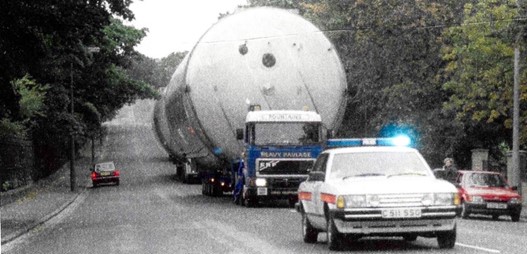
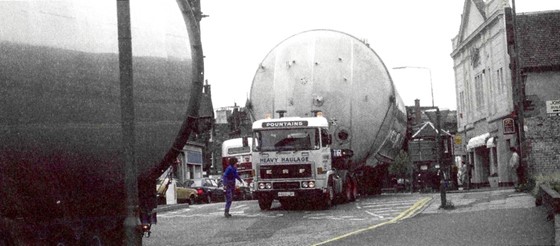

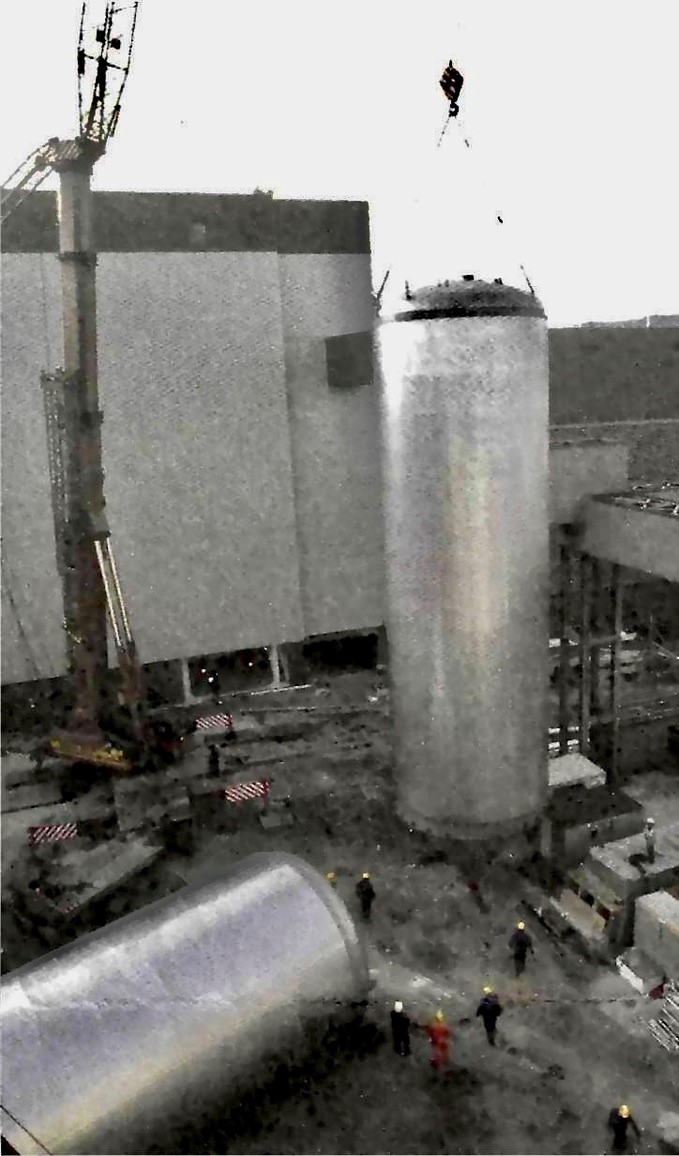
7. Last Runnings
![]() September event Thursday 4th – Visit to Traquair Brewery
This year’s event is a visit to Traquair House. It’s Scotland’s oldest inhabited house and has been lived in for over 900 years. It was originally a hunting lodge and has been visited by 27 Kings and Queens. The brewery dates back to the early 1700s and later disused by the early 1800s and rediscovered with brewing continued from 1965 onwards, using the original oak tuns that are over 200 years old.
All members are welcome , If you which to attend please e-mail the secretary before the 16th of August to enable us to plan for numbers – thanks , details below.
September event Thursday 4th – Visit to Traquair Brewery
This year’s event is a visit to Traquair House. It’s Scotland’s oldest inhabited house and has been lived in for over 900 years. It was originally a hunting lodge and has been visited by 27 Kings and Queens. The brewery dates back to the early 1700s and later disused by the early 1800s and rediscovered with brewing continued from 1965 onwards, using the original oak tuns that are over 200 years old.
All members are welcome , If you which to attend please e-mail the secretary before the 16th of August to enable us to plan for numbers – thanks , details below.
Thursday 4th September, meet at the Waverley Station entrance on Market Street at 10:45am
Depart Edinburgh at 11am by mini-bus
Arrive at Traquair at 12pm and have brewery tour
There is a cafe at Traquair for something to eat
Members can then visit the historic house, shop and walk around the grounds (SBAA to pay for the brewery and house visit)
Minibus to leave Traquair at 3:30pm
Arrive back at Edinburgh at 4:30pm
![]() A reminder that SBAA annual fees will be due at the end of September for most members. Wait until you get an automated email from our system early September and follow the instructions to make a quick and safe payment. This is our official method for renewal. If you had a standing order or direct debit please cancel.
A reminder that SBAA annual fees will be due at the end of September for most members. Wait until you get an automated email from our system early September and follow the instructions to make a quick and safe payment. This is our official method for renewal. If you had a standing order or direct debit please cancel.
![]() On a personal note, regarding Geoff Palmer founder and member of the SBAA. I sometimes wonder if our newsletter has been delivered? However, despite having an active interest in so many diverse areas. The first person to respond, usually with a warm supporting comment, was Sir Geoff. It shows the real character of the great man. Ivor Reid Secretary.
On a personal note, regarding Geoff Palmer founder and member of the SBAA. I sometimes wonder if our newsletter has been delivered? However, despite having an active interest in so many diverse areas. The first person to respond, usually with a warm supporting comment, was Sir Geoff. It shows the real character of the great man. Ivor Reid Secretary.
![]() Remember and send in any articles or interesting photos, next newsletter October .
Remember and send in any articles or interesting photos, next newsletter October .
Correspondence to the SBAA Secretary secretary@scottishbrewingarchive.co.uk
SBAA Newsletter No. 64 – July. 2025
